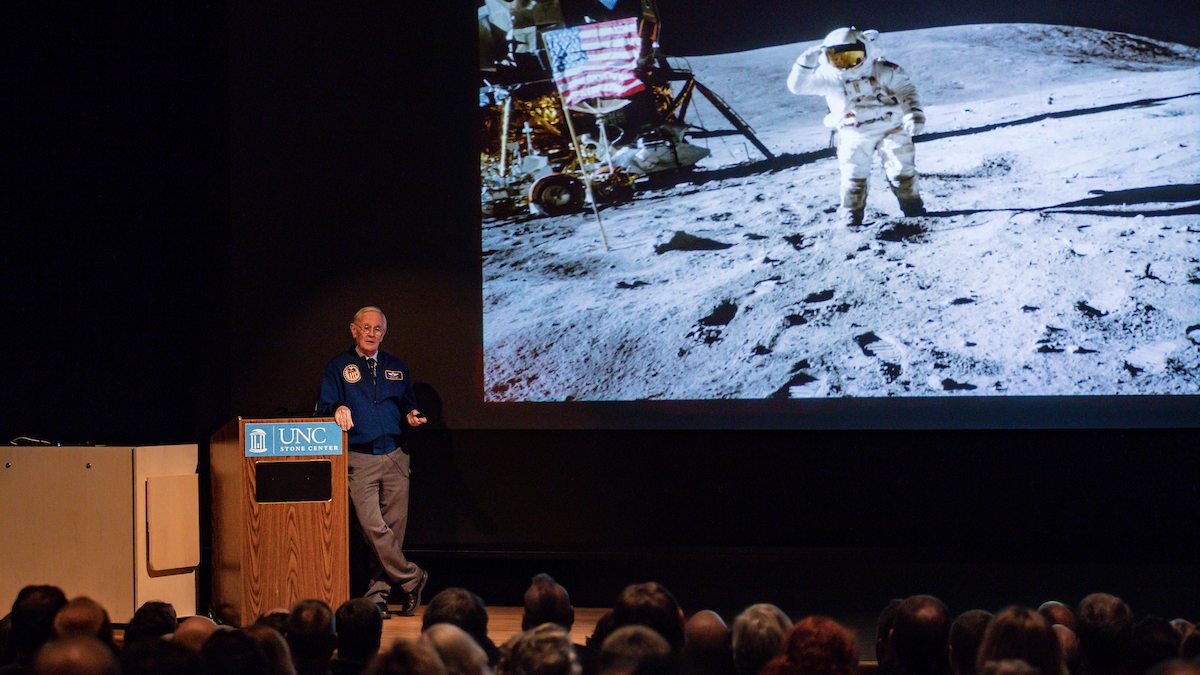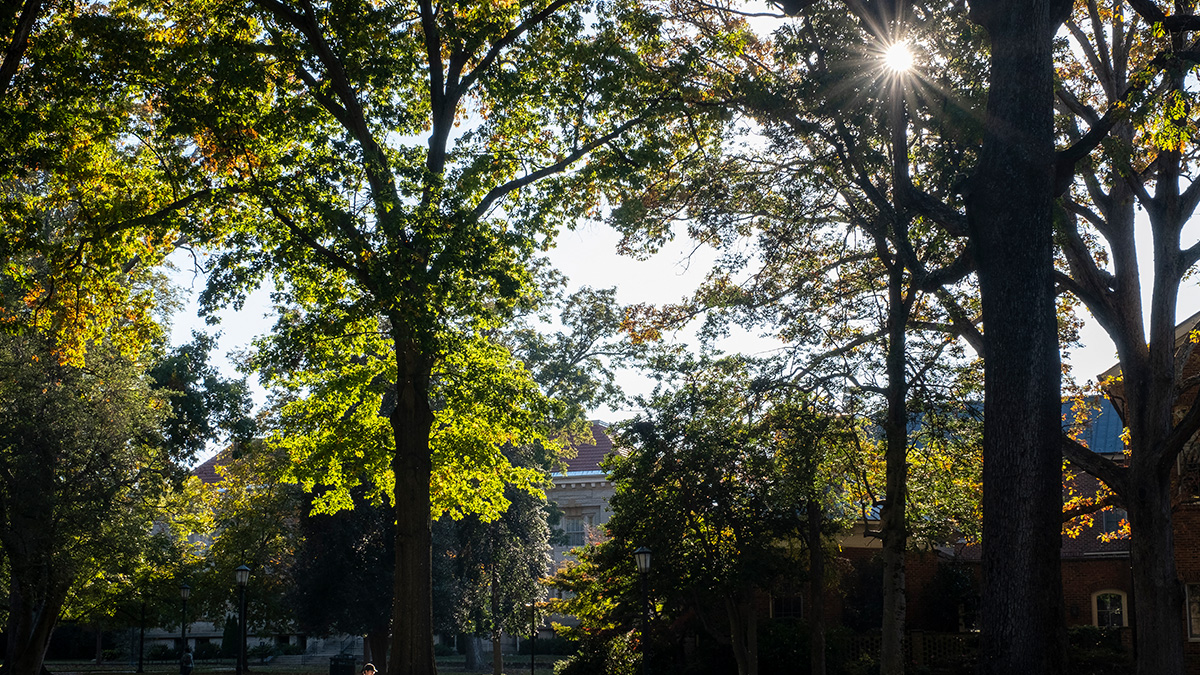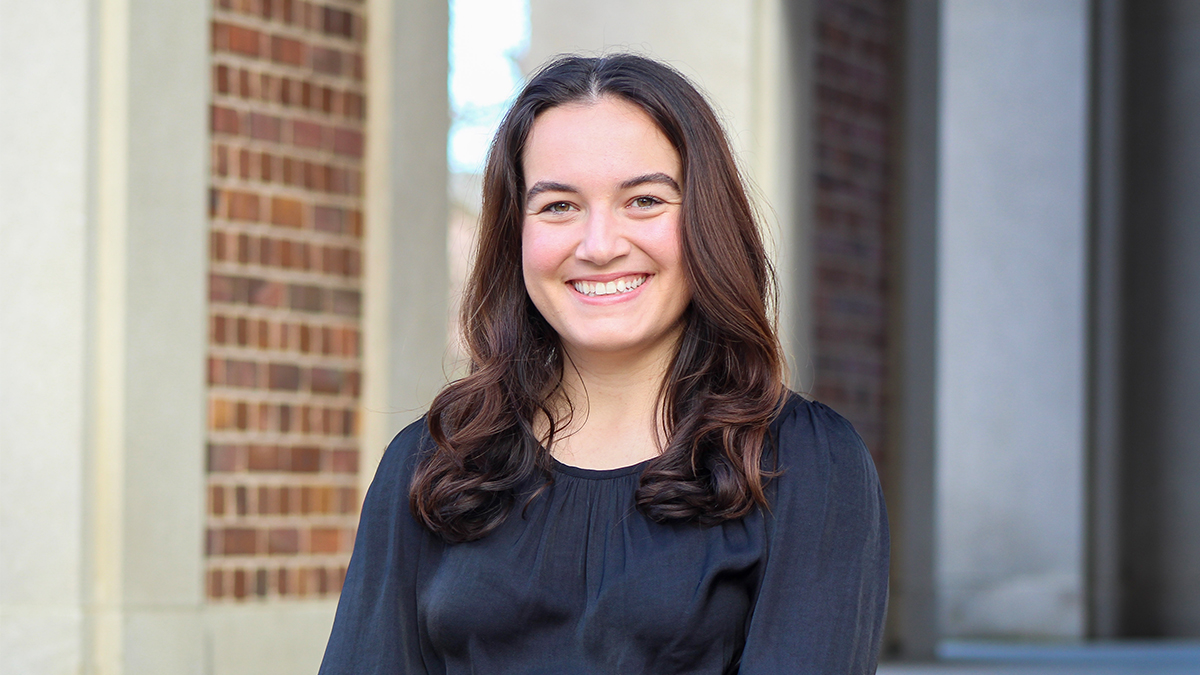Astronaut Charlie Duke revisits Carolina, where his career took off
One of 62 astronauts who trained in celestial navigation at Morehead Planetarium, Charlie Duke is among only 12 people who have walked on the moon.

North Carolina native Charlie Duke spent 11 days of his life in outer space and nearly 24 hours on the moon.
Before that, he spent a year at the University of North Carolina at Chapel Hill’s Morehead Planetarium, where he learned how to navigate the stars.
On Feb. 22, Duke returned to UNC-Chapel Hill to recount some of the most extraordinary moments of his career as an astronaut, including piloting the Apollo 16 mission and becoming the youngest man ever to walk on the moon.
“I took this picture about 20,000 miles from the earth,” Duke said to a sold-out crowd at the Sonja Haynes Stone Center for Black Culture and History, sharing a snapshot of the world from space. “I saw it — a jewel of blue and white and brown, and it just hung in the blackness of space. It was incredibly beautiful.”
Duke, one of 62 astronauts who trained in celestial navigation at Morehead Planetarium, is among only 12 people who have walked on the moon. His lecture, jointly hosted by Carolina’s Morehead Planetarium and Science Center, the College of Arts & Sciences and the Stone Center, offered a glimpse into his experience with NASA.
During his career, Duke worked on five Apollo missions, both in mission control and in flight. But when Duke was young, he never expected to leave his footprints on the moon.
“I did not go out into the backyard as a child and say, ‘Mama, I’m going to walk on the moon.’ She would’ve dropped a net on me and taken me to a psychiatric hospital,” he joked.
Even when John F. Kennedy announced that Americans would go to the moon and return safely home by 1969, Duke and his peers in the Air Force didn’t believe it.
“We didn’t think anybody was going to [go to the moon],” he said. “Eight years and two months later, I’m sitting in mission control talking to Neil Armstrong as he landed on the moon.”
Three years after that, Duke walked on the moon himself. He took with him the lessons learned at Carolina about the alignment of the stars and the geology of the moonscape.
And at 83 years old today, he still remembers every detail: the tension leading up to the launch, the dehydrated food, the way the dust clung to his space suit, and most importantly, the way he felt when he stepped foot on the moon for the first time.
“It was wonder, it was awe — the feeling of ‘I’m on the moon!’ It was the most pure, pristine place I had ever see,” he said. “It was very humbling and also very exciting.”
Now Duke waits for another American to walk on the moon. The next person to do so will find Duke’s footprints there — “there’s no erosion on the moon,” he joked — as well as the photo of his family that he left among the craters.
“Fortunately, it looks like there’s some push to return to the moon,” he said. “There’s a lot of good science to be done there. And I think the human spirit is no different than it was [back then]. It’s that same kind of exploration spirit that a lot of us have got inside that’s going to take us back.”




